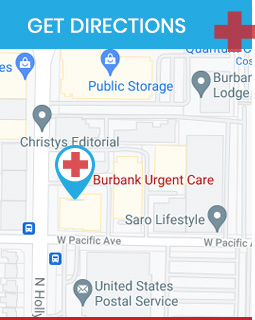Urgent Care for Diagnostic Imaging Services in Burbank, CA
Diagnostic imaging services have come a long way over the years to help advance medical science and help many live longer, healthier lives with the ability to find conditions and diseases earlier on, and save lives. Visit Burbank Urgent Care and Walk-In Clinic today for diagnostic imaging. For more information, make a reservation or contact us today. We are conveniently located at 3413 W. Pacific Avenue Suite # 102 Burbank, CA 91505.



Additional Conditions We Treat
▸ Urgent Care
▸ Walk in Clinic
▸ Telehealth
▸ Imaging
▸ Lab Testing
▸ Women Health Issues
▸ Pediatrics (3 Months and Older)
▸ COVID-19 Testing
▸ General Medicine
▸ School Physicals
▸ Sport Physicals

Additional Conditions We Treat
▸ Urgent Care
▸ Walk in Clinic
▸ Telehealth
▸ Imaging
▸ Lab Testing
▸ Women Health Issues
▸ Pediatrics (3 Months and Older)
▸ COVID-19 Testing
▸ General Medicine
▸ School Physicals
▸ Sport Physicals
▸ Eye Pain
▸ Ear Pain Treatment
▸ Blood Pressure Screening
▸ Flu Shots
▸ Entertainment Medicine
▸ Abdominal Pain Treatment
▸ Orthopedic Care
▸ Sprains & Strains
▸ Kidney Stones Treatment
▸ Pelvic Pain Treatment
▸ Chest Pain Treatment
▸ Pre-Op Services
▸ Migraine Treatment
▸ Arthritis Treatment
▸ Reflux Treatment
▸ Asthma Treatment
▸ Diabetes Treatment
▸ Corneal Abrasions
▸ Constipation Treatment
▸ Bursitis Treatment





